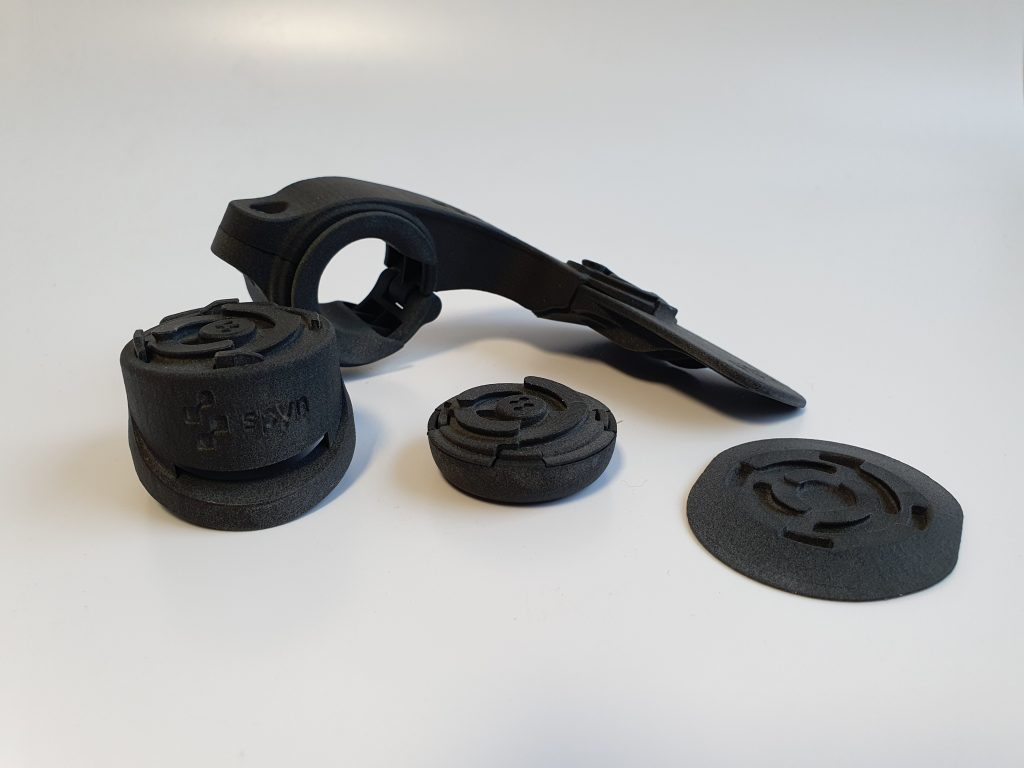For agile businesses like engineering design consultancy firm Rotite Technologies, reducing any time spent on developing products and getting them to market, is vital when launching new lines. However, prototyping using conventional injection molding can be expensive, slow and inflexible, while outsourcing mock-ups often inflates product lead times even more.
Instead, Rotite has adopted Sinterit 3D printing, and found that in-house prototyping enables it to rapidly switch design philosophy, without needing to worry about the time and cost penalties of producing redundant parts. Since acquiring the Lisa Pro 3D printer, the firm has also been able to iterate and launch a new own-brand product range, potentially handing it a competitive edge against its market rivals.
“We were outsourcing to a service provider using a Multi Jet Fusion (MJF) machine,” explained Connor Whyley, Design Manager at Rotite Technologies. “Selective Laser Sintering (SLS) acts as a bridge to injection molding, lets us bring products to market sooner and the final look is superior.”
“We prefer SLS 3D printing, and we are really really pleased with the results.”

Rotite’s fastening technology
Based in Manchester, UK, Rotite offers a high-strength, low-profile, patented fastening technology, which can be integrated into client products to help them save space while reducing product weight, lead times and overall cost. Given that Rotite can be produced flexibly using polymers, metals and composites, it has found applications in the aerospace, automotive, marine, consumer and construction sectors.
However, with the launch of its own-brand ‘Spyn’ line, Rotite has now moved towards designing and delivering its own end-use products. In order to do so effectively, and deliver high-performance fasteners that meet the needs of its clients, the firm has therefore chosen to abandon its traditional outsourcing model, and adopt Sinterit 3D printing instead.
Switching to in-house production
Previously, Rotite sent its proof-of-concept designs off to an unnamed 3D printing service provider, which produced prototypes for the firm using an MJF system before shipping them back. While the parts were of a serviceable standard, the cost and lead times incurred using the service became a barrier to the expansion of the company’s product portfolio.
Since then, Rotite has been awarded innovation funding by the UK government, and channeled some of this into the acquisition of Sinterit’s Lisa Pro 3D printer. Leveraging its compact new desktop system, the firm is now able to manage its entire production workflow internally, from concepting and design right through to creating end-use ready parts.
Given that a new product’s time to market is often a critical factor in its success or failure, Rotite’s new Spyn range could also hinge on the company’s ability to iterate designs quickly and effectively. Thankfully, the firm has already found that Sinterit’s technologies yield parts with an improved surface finish, while enabling the production of highly complex geometries without the need for any supports.

A bridge to injection molding
As a lean operation, Rotite’s ability to bring its products to market without investing in injection molding equipment has been vital to its recent success. Using such conventional technologies often forces companies to spend big on specialized tooling, which then commits them to a production process that could become obsolete in future.
By contrast, adopting 3D printing has provided Rotite with the agility to make rapid changes to its workflow, allowing it to pivot on an idea without sinking funding into redundant tooling. The Lisa Pro is also relatively affordable compared to other SLS machines, enabling the firm to enter end-use production, while avoiding the up-front costs of acquiring other more expensive technologies.
As an added benefit, Sinterit’s PA12 powder features an extremely low powder refresh rate, allowing Rotite to make significant savings on its material expenditure. Consequently, thanks to the Lisa Pro’s cost, efficiency and flexibility benefits, the company has effectively been able to expedite its manufacturing workflow, while creating end-use-ready products at a much higher standard than before.
To stay up to date with the latest 3D printing news, don’t forget to subscribe to the 3D Printing Industry newsletter or follow us on Twitter or liking our page on Facebook.
Are you looking for a job in the additive manufacturing industry? Visit 3D Printing Jobs for a selection of roles in the industry.
Featured image shows Rotite’s Product Design Engineer Connor Whyley alongside the Sinterit Lisa Pro 3D printer. Photo via Sinterit.


